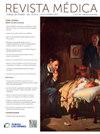神经临界患者的颅内低血压综合征:病例报告
IF 0.4
Q4 MEDICINE, GENERAL & INTERNAL
引用次数: 0
摘要
目的强调在动脉瘤性蛛网膜下腔出血(aSAH)患者中识别由脊髓引流(SD)引起的颅内低血压综合征(ICH)的重要性。临床病例:一名42岁女性患者,无既往病史,因全身性强直阵挛性发作被送至急诊科。通过脑CT血管造影初步诊断aSAH,并通过血管内线圈治疗动脉瘤。患者接受SD治疗,但随后发展为SIH,以颅内压负(ICP)和直立性头痛为主要症状。sih表现出临床和影像学特征,直立性头痛和小脑扁桃体下降是最常见的表现。文献中描述了SIH的各种治疗方案。然而,当使用适当的技术时,硬膜外血贴是最有效的替代方法之一。结论ssd是治疗aSAH的有效选择,且不良反应发生率低。然而,意识到相关的风险是至关重要的。正确了解不同的临床表现和诊断方法对于治疗SIH至关重要。本文章由计算机程序翻译,如有差异,请以英文原文为准。
Síndrome de hipotensión intracraneal en paciente neurocrítico: reporte de caso
Objective
to highlight the importance of recognizing intracranial hypotension syndrome (ICH), derived from the use of a spinal drainage (SD), in patients with aneurysmal subarachnoid hemorrhage (aSAH).
Clinical Case
a 42-year-old female patient with no prior medical history was admitted to the emergency department due to a generalized tonic-clonic seizure. An initial diagnosis of aSAH was made using brain CT angiography, and an aneurysm was treated through endovascular therapy with coils. SD was placed for management, but the patient subsequently developed SIH, characterized by negative intracranial pressure (ICP) and orthostatic headache as her cardinal symptoms.
Discussion
SIH presents with both clinical and radiological features, with orthostatic headache and cerebellar tonsillar descent being among the most common findings. Various treatment options for SIH have been described in the literature. However, the epidural blood patch is one of the most effective alternatives when performed using the appropriate technique.
Conclusions
SD is an effective alternative with a low rate of side effects in the management of aSAH. However, it is crucial to be aware of the associated risks. Proper knowledge of the different clinical presentations and diagnostic approaches is essential for managing SIH.
求助全文
通过发布文献求助,成功后即可免费获取论文全文。
去求助
来源期刊

Revista Medica Clinica Las Condes
MEDICINE, GENERAL & INTERNAL-
CiteScore
0.80
自引率
0.00%
发文量
65
审稿时长
81 days
 求助内容:
求助内容: 应助结果提醒方式:
应助结果提醒方式:


